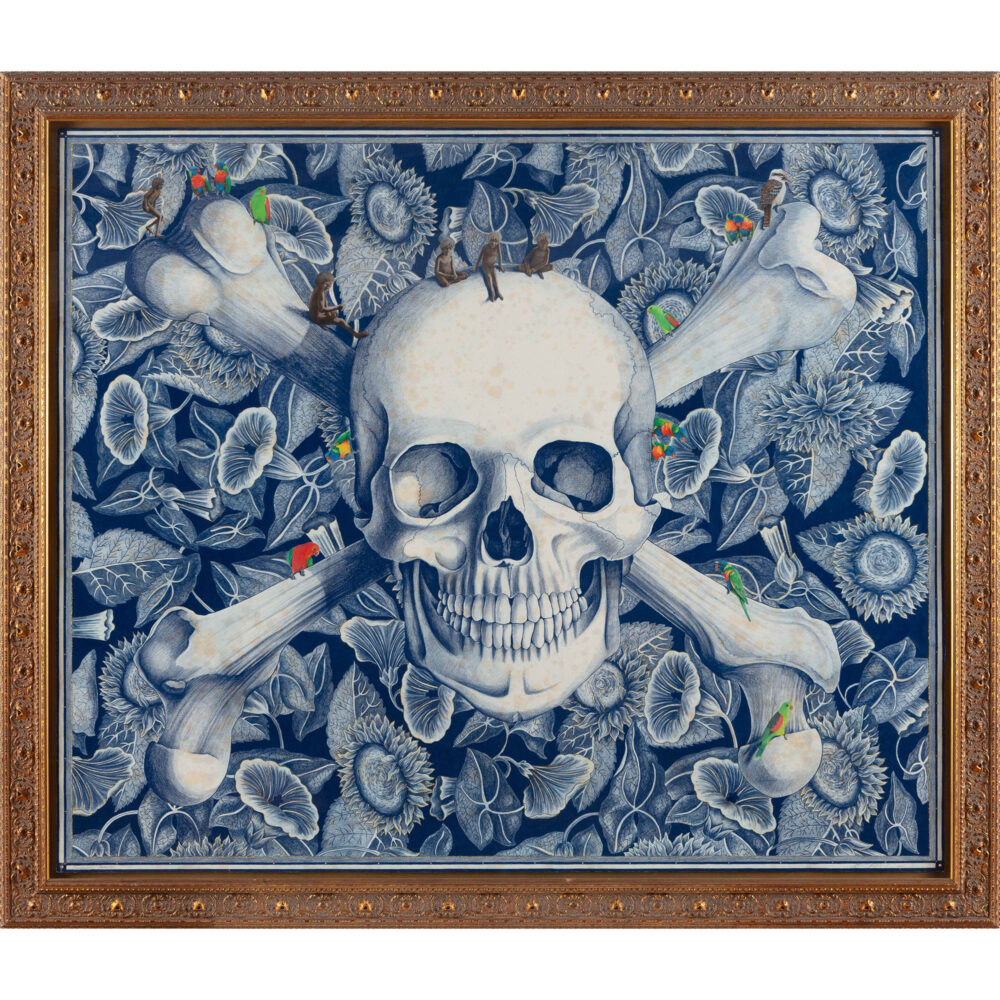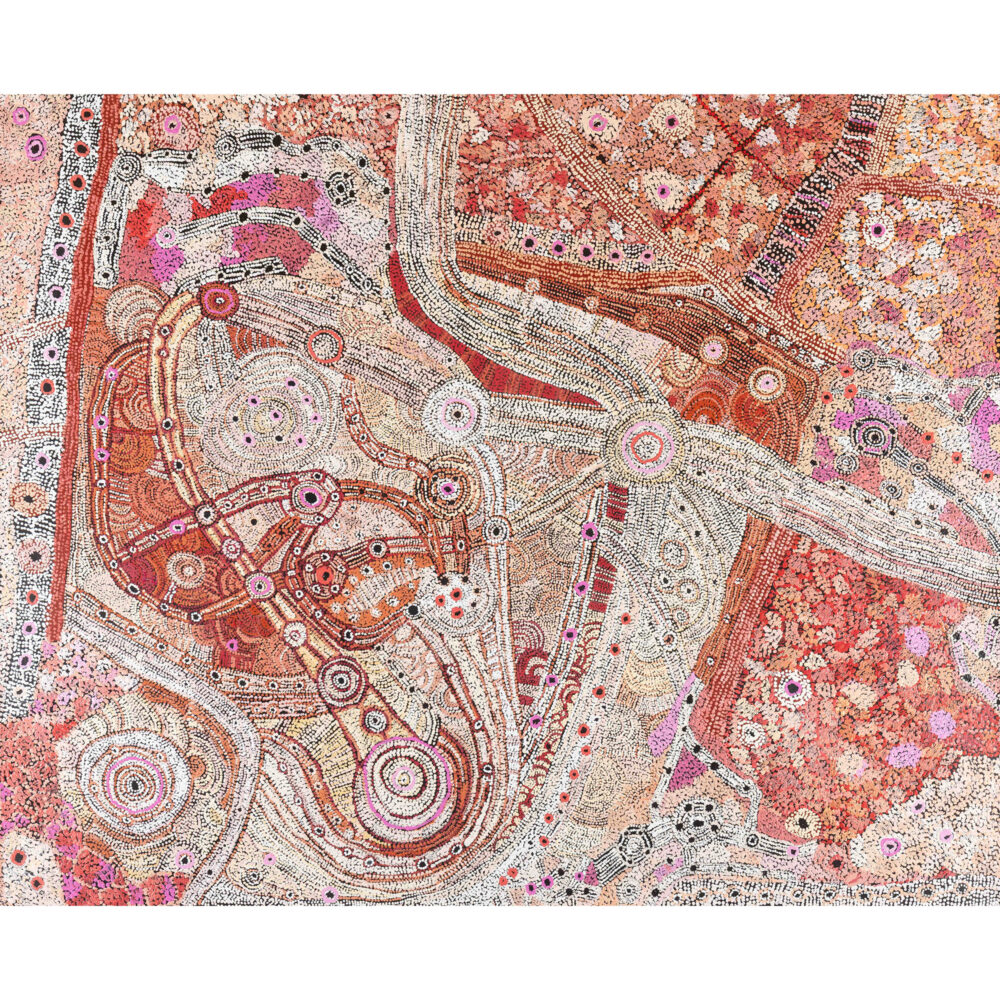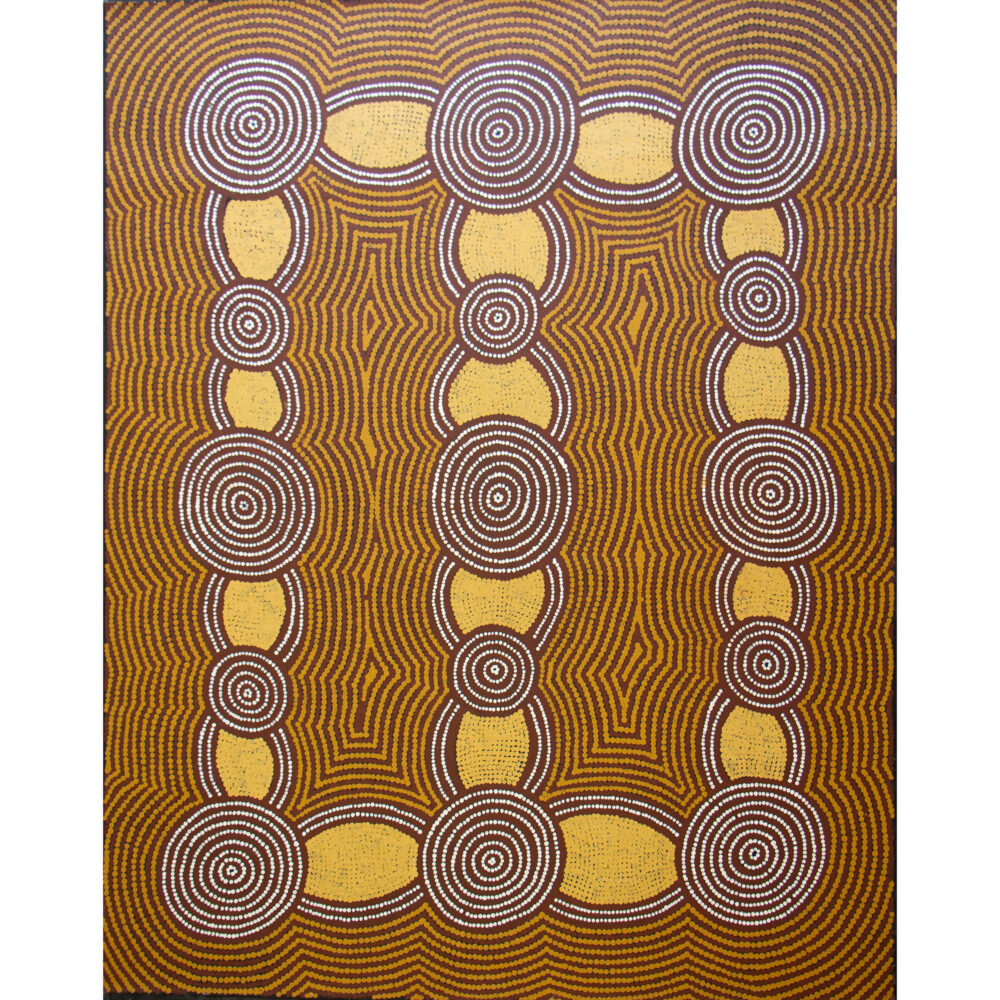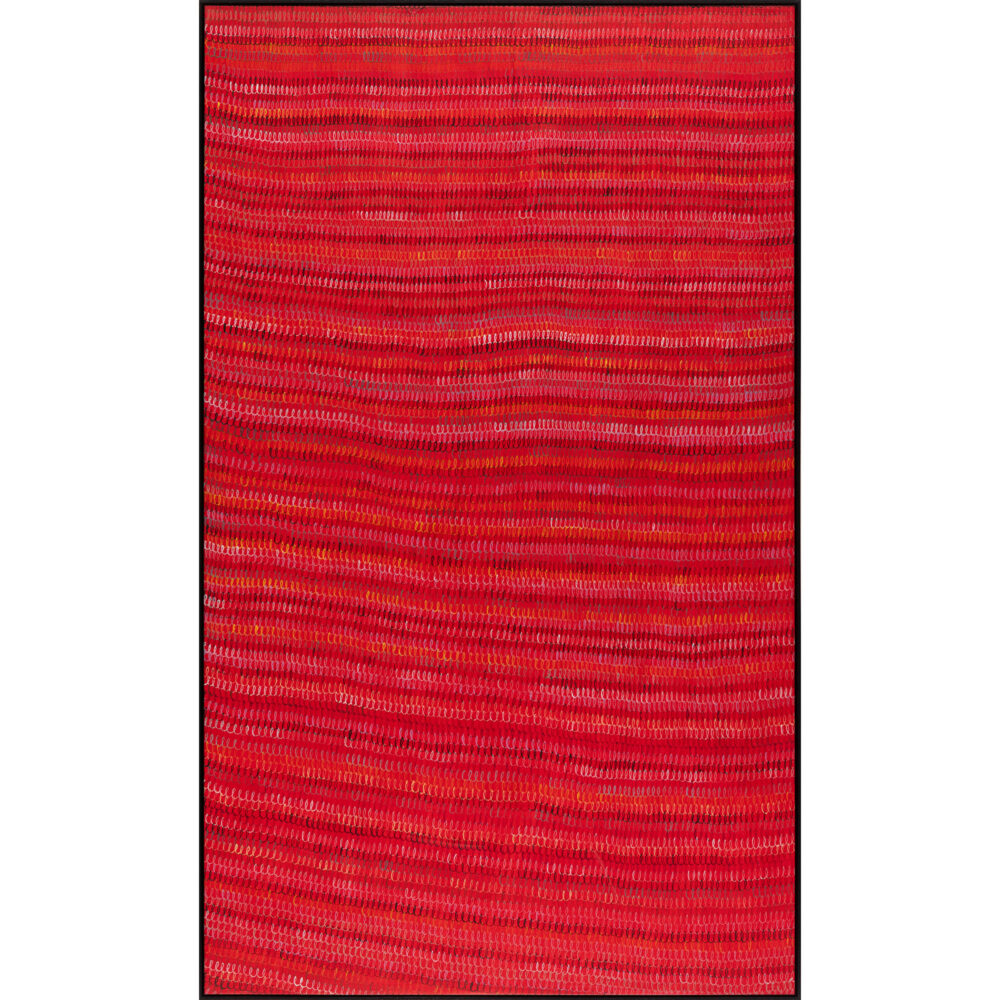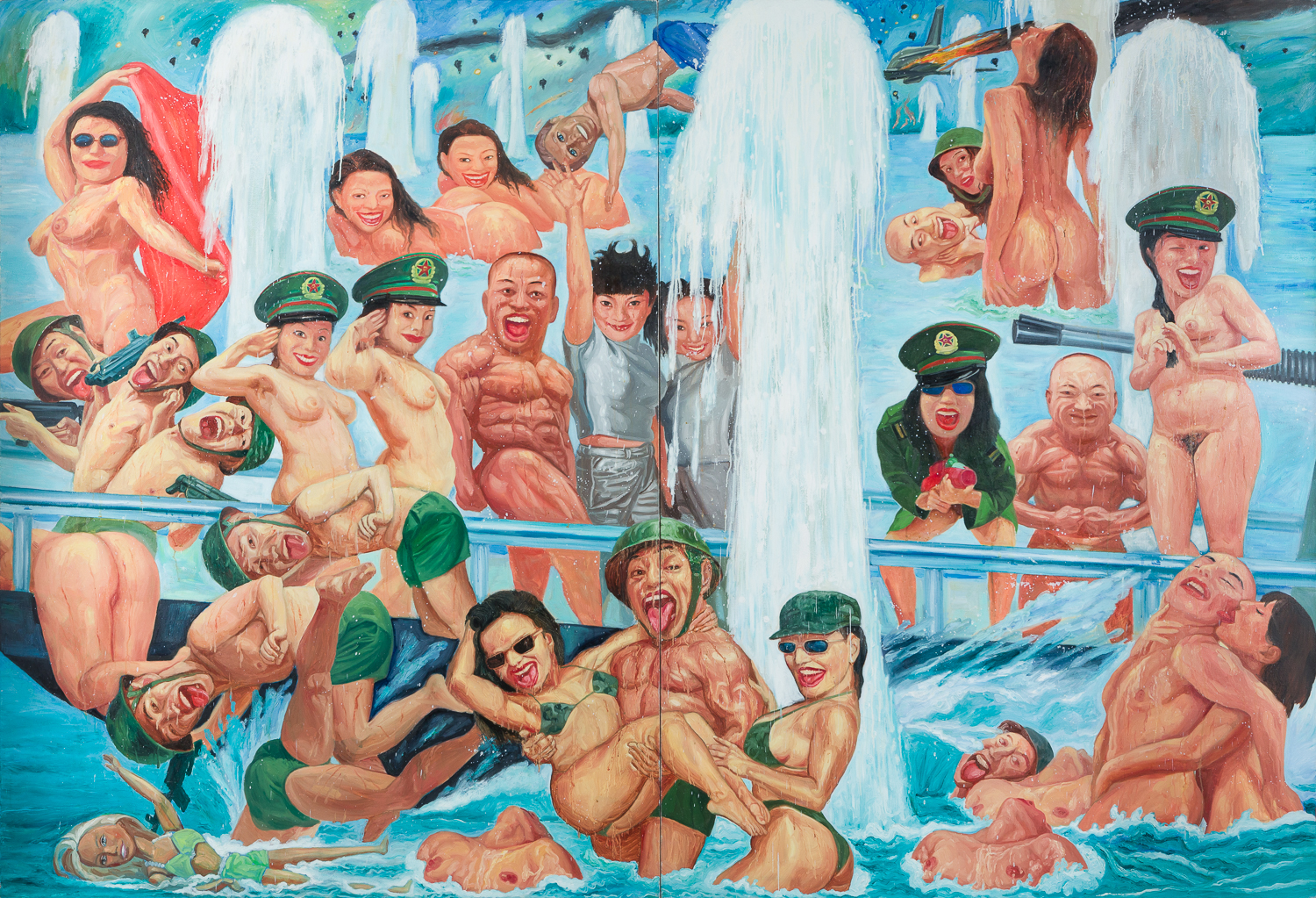
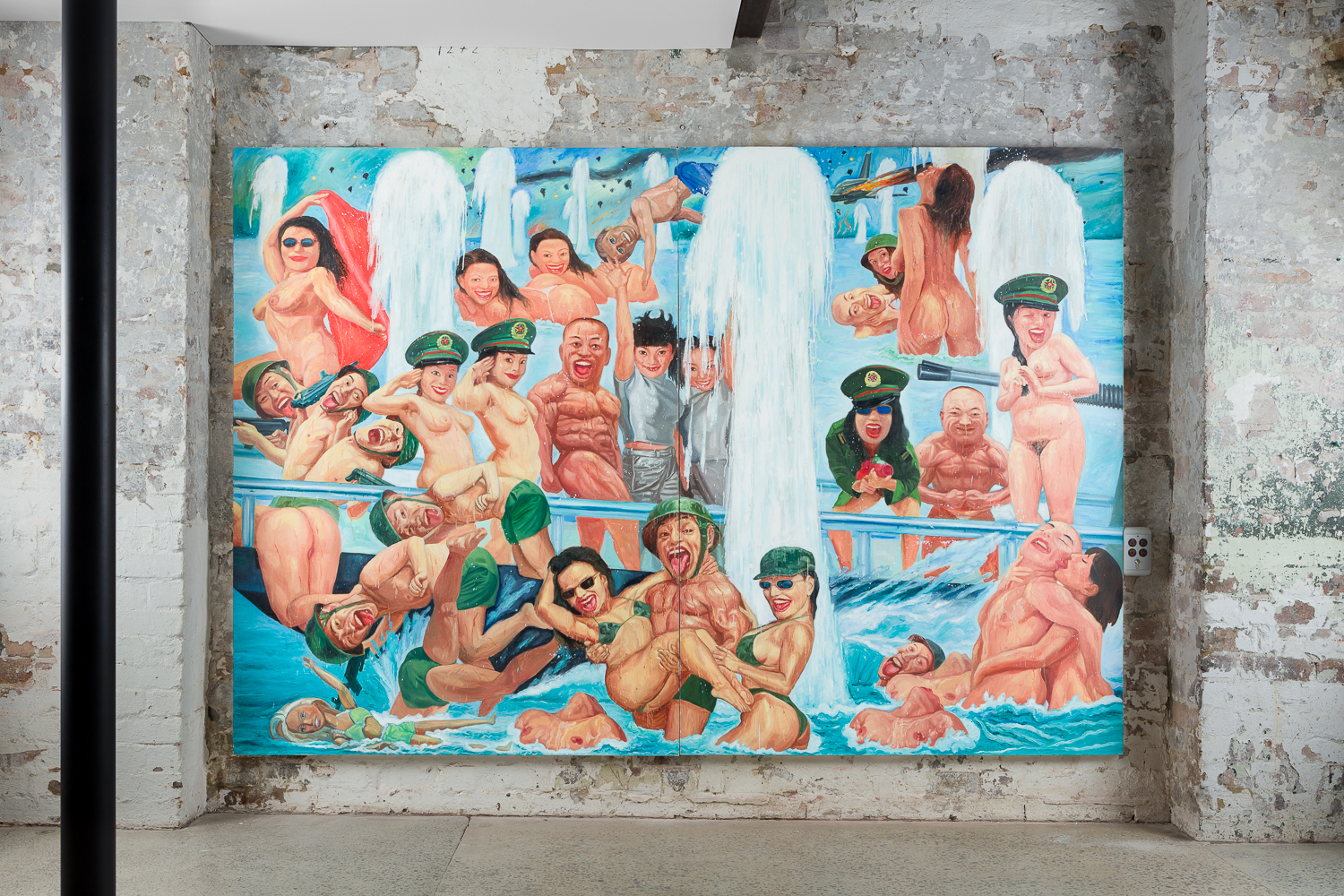
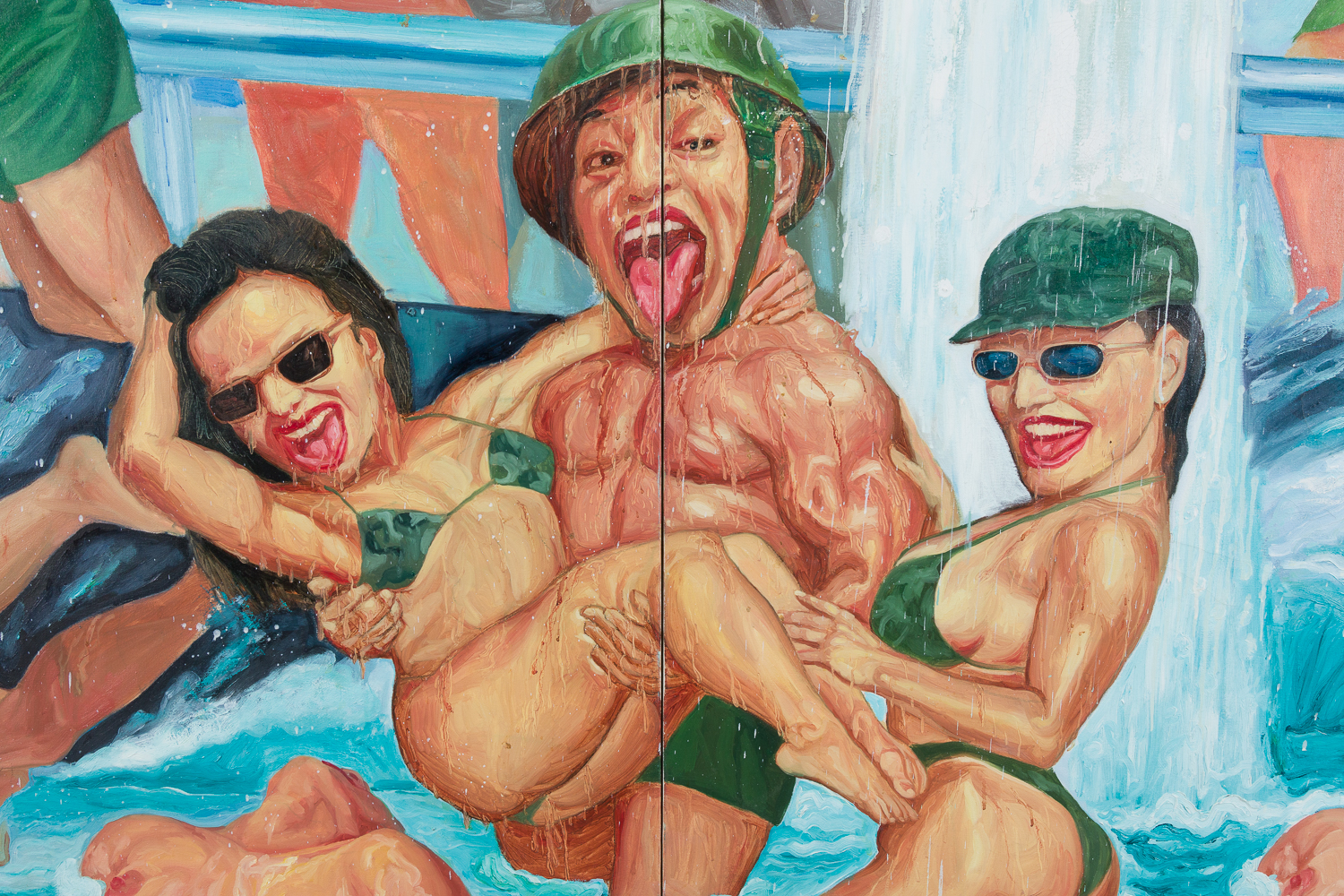
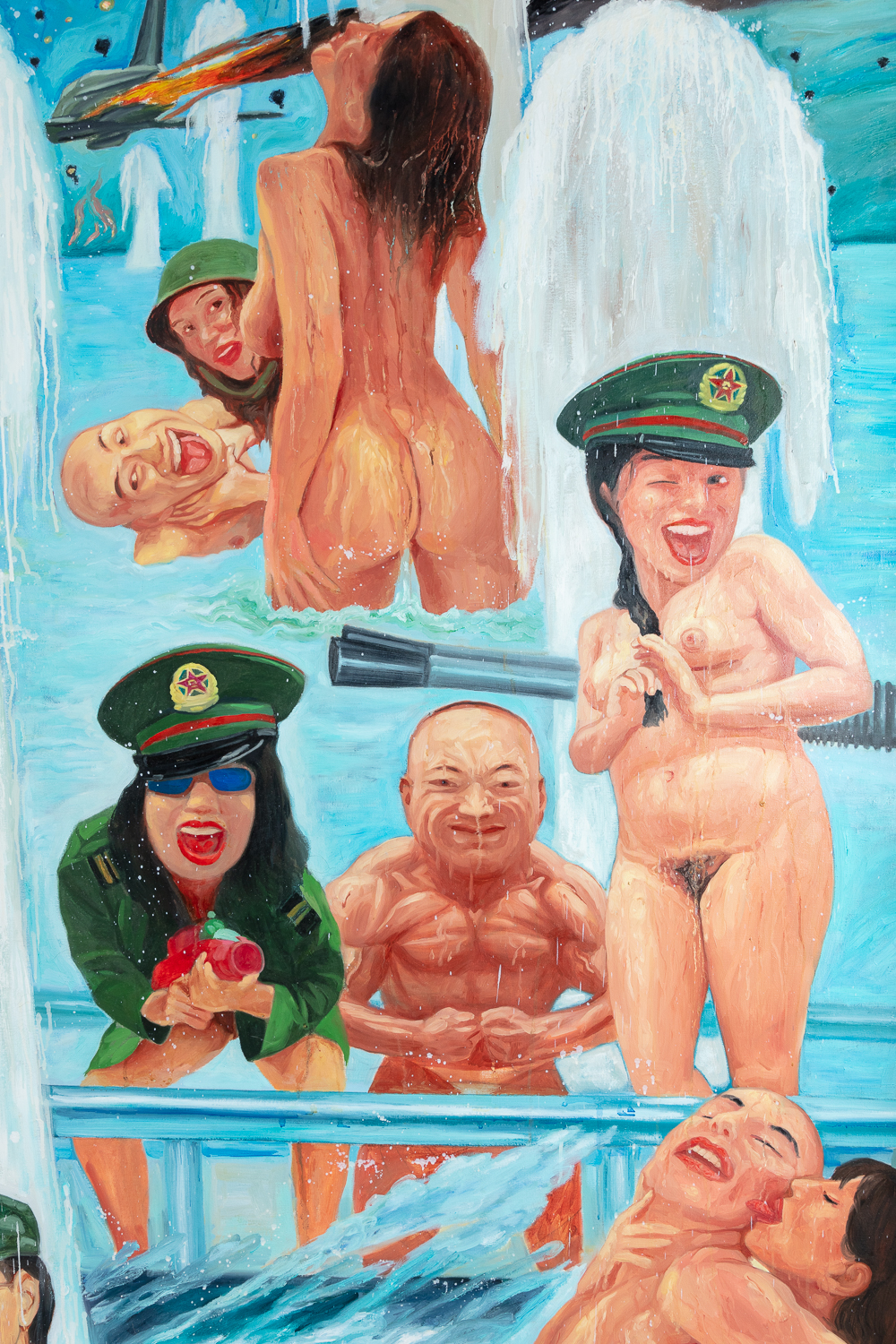
Born in China in 1962/63, Guo Jian was raised within a highly controlled political environment. He served for more than three years as a propaganda-poster painter in the People’s Liberation Army and, as an arts student in Beijing, witnessed the Tiananmen Square massacre in 1989, where he assisted in carrying the wounded to hospital.
I Like the Blue Sea is a major painting from a pivotal period in Guo Jian’s practice, created shortly after his relocation to Australia in the early 1990s and at a moment when his lexicon of soldiers, entertainers and staged militarism had fully matured. The ambitious scale of the diptych underscores its significance. The title hints at the seductive veneer of leisure and freedom – a “blue sea” of desire – set in tension with the rigid, performative world of military spectacle. This collision of fantasy and discipline is central to Guo Jian’s critique: how both state power and popular culture deploy beauty, sexuality and spectacle to shape belief.
The painting gains further strength through its early institutional exposure, shown at both the Canberra Contemporary Art Space and Heide Museum of Modern Art in 2000–01. Positioned alongside its companion work Trigger Happy in the National Gallery of Australia, I Like the Blue Sea stands as an important example of Guo Jian’s mature, internationally recognised engagement with propaganda, memory, trauma and the negotiation of identity between China and the West.
I Like the Blue Sea, 2000
PROVENANCE
Canberra Contemporary Arts Space: Mama’s Tripping, 9 September – 21 October 2000
Heide Museum of Modern Art, Victoria: Mama’s Tripping, January 2001
Ray Hughes Gallery, Sydney: Group Show, January 2003
Michael Reid: Guo Jian – My China: Growing Change, July 2005
Private collection, Sydney
COMPANION PAINTING
Guo Jian, Trigger Happy, 1999, oil on canvas, 180 x 200 cm, National Gallery of Australia, acquired 2000.
$75,000
In stock
Born in China in 1962/63, Guo Jian was raised within a highly controlled political environment. He served for more than three years as a propaganda-poster painter in the People’s Liberation Army and, as an arts student in Beijing, witnessed the Tiananmen Square massacre in 1989, where he assisted in carrying the wounded to hospital.
I Like the Blue Sea is a major painting from a pivotal period in Guo Jian’s practice, created shortly after his relocation to Australia in the early 1990s and at a moment when his lexicon of soldiers, entertainers and staged militarism had fully matured. The ambitious scale of the diptych underscores its significance. The title hints at the seductive veneer of leisure and freedom – a “blue sea” of desire – set in tension with the rigid, performative world of military spectacle. This collision of fantasy and discipline is central to Guo Jian’s critique: how both state power and popular culture deploy beauty, sexuality and spectacle to shape belief.
The painting gains further strength through its early institutional exposure, shown at both the Canberra Contemporary Art Space and Heide Museum of Modern Art in 2000–01. Positioned alongside its companion work Trigger Happy in the National Gallery of Australia, I Like the Blue Sea stands as an important example of Guo Jian’s mature, internationally recognised engagement with propaganda, memory, trauma and the negotiation of identity between China and the West.


